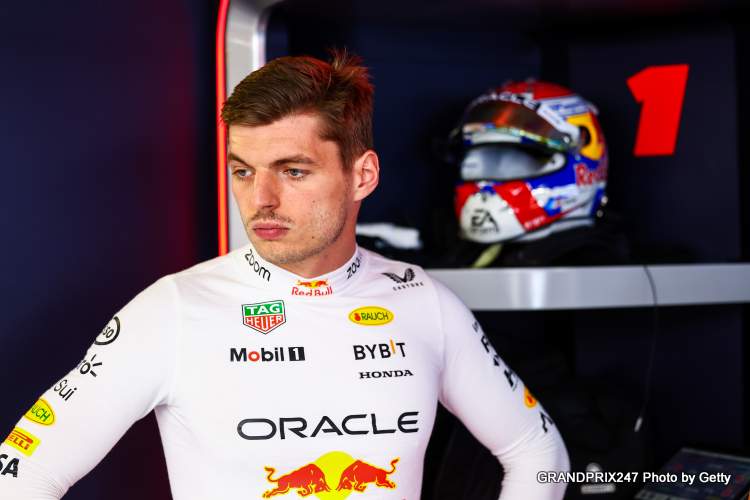MONTE-CARLO, MONACO – MAY 25: Max Verstappen, from the Netherlands, and Oracle Red Bull Racing watch from the pit box during qualifying ahead of the Monaco Grand Prix Formula 1 at the Monaco Circuit on May 25, 2024 in Monte-Carlo, Monaco. (Photo by Mark Thompson/Getty Images)
Red Bull and Verstappen have expressed their concerns regarding the future regulations for 2026, which will introduce power units combining internal combustion and electric power in a 50/50 ratio. They believe this configuration will cause the car to run out of power at the end of the straights on the track. However, both the FIA and Formula One Management have downplayed these concerns. Now, the chassis regulations for 2026 have been released and include the incorporation of active aerodynamics to compensate for the lack of power on the straights.
Following the release of the 2026 regulations, drivers were asked to give their feedback. Max Verstappen shared his opinions during a press conference in Montreal. He expressed a neutral stance, acknowledging that new rules are inevitable. However, he also pointed out that the 50/50 split between the engine and battery is not as straightforward as it seems. Verstappen emphasized the need for active aerodynamics on the straights to reduce drag and ensure the car’s sustainability throughout a lap. Without these measures, the car would run out of battery power, which has been identified as a potential issue.
In addition to these technical considerations, Verstappen noted that keeping the same regulations for a long period of time would lead to more intense competition among teams. Therefore, he anticipates that the 2026 regulations will bring a significant reset, not only in terms of car performance, but also in relation to engines. Verstappen acknowledged that some teams may have a better understanding of the regulations and gain an advantage in engine development. However, he also recognized that Formula 1 aims to attract new manufacturers and a substantial change is needed to achieve this goal.
While Verstappen remains uncertain about the impact of the 2026 regulations, he expressed the possibility of being pleasantly surprised when he finally drives the actual car. He emphasized that his current position is neutral and accepts whatever comes. When asked if he tested the 2026 car in the simulator, Verstappen confirmed that he had seen several simulations over time. He acknowledged the progress made in terms of integration between engine and chassis and mentioned that some tracks may showcase the new regulations better than others. Verstappen concluded by recognizing that energy limitations will be a factor that drivers will need to manage in the future.










